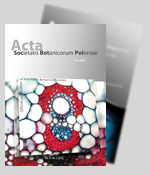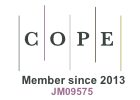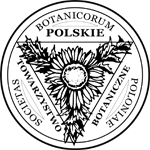One Name – One Fungus: The Influence of Photosynthetic Partners on the Taxonomy and Systematics of Lichenized Fungi
Abstract
Keywords
References
Armaleo, D., & Clerc, P. (1991). Lichen chimeras: DNA analysis suggests that one fungus forms two morphotypes. Experimental Mycology, 15, 1–10. https://doi.org/10.1016/0147-5975(91)90002-U
Arnold, A. E., Miadlikowska, J., Higgins, K. L., Sarvate, S. D., Gugger, P., Way, A., Hofstetter, V., Kauff, F., & Lutzoni, F. (2009). A phylogenetic estimation of trophic transition networks for ascomycetous fungi: Are lichens cradles of symbiotrophic fungal diversification? Systematic Biology, 58(3), 283–297. https://doi.org/10.1093/sysbio/syp001
Bates, S. T., Berg-Lyons, D., Lauber, C. L., Walters, W. A., Knight, R., & Fierer, N. (2012). A preliminary survey of lichen associated eukaryotes using pyrosequencing. Lichenologist, 44(1), 137–146. https://doi.org/10.1017/S0024282911000648
Bates, S. T., Cropsey, G. W. G., Caporaso, J. G., Knight, R., & Fierer, N. (2011). Bacterial communities associated with the lichen symbiosis. Applied and Environmental Microbiology, 77(4), 1309–1314. https://doi.org/10.1128/AEM.02257-10
Clerc, P., Camenzind, R., Dietrich, M., Groner, U., Grundlehner, S., Oberli, F., Scheidegger, C., & Wildi, E. (1992). Lobaria amplissima (Scop.) Forss. dans les Préalpes vaudoises [Lobaria amplissima (Scop.) Forss. in the Western Alps]. Meylania, 1(1), 16–20.
Cornejo, C., Derr, C., & Dillman, K. (2017). Ricasolia amplissima (Lobariaceae): One species, three genotypes and a new taxon from south-eastern Alaska. Lichenologist, 49(6), 579–596. https://doi.org/10.1017/S002428291700041X
Dal-Forno, M., Lawrey, J. D., Sikaroodi, M., Bhattarai, S., Gillevet, P. M., Sulzbacher, M., & Lücking, R. (2013). Starting from scratch: Evolution of the lichen thallus in the basidiolichen Dictyonema (Agaricales: Hygrophoraceae). Fungal Biology, 117(9), 584–598. https://doi.org/10.1016/j.funbio.2013.05.006
Dal Grande, F., Rolshausen, G., Divakar, P. K., Crespo, A., Otte, J., Schleuning, M., & Schmitt, I. (2017). Environment and host identity structure communities of green algal symbionts in lichens. New Phytologist, 217(1), 277–289. https://doi.org/10.1111/nph.14770
del Campo, E., Catalá, S., Gimeno, J., del Hoyo, A., Martínez-Alberola, F., Casano, L. M., Grube, M., & Barreno, E. (2013). The genetic structure of the cosmopolitan three- partner lichen Ramalina farinacea evidences the concerted diversification of symbionts. FEMS Microbiology Ecology, 83(2), 310–323. https://doi.org/10.1111/j.1574- 6941.2012.01474.x
Diederich, P., Lawrey, J. D., & Ertz, D. (2018). The 2018 classification and checklist of lichenicolous fungi, with 2000 non-lichenized, obligately lichenicolous taxa. Bryologist, 121(3), 340–425. https://doi.org/10.1639/0007-2745-121.3.340
Eigler, G. (1969). Studien zur Gliederung der Flechtengattung Lecanora [Studies on the classification of the lichen genus Lecanora]. Lubrecht & Cramer.
Engelen, A., Convey, P., & Ott, S. (2010). Life history strategy of Lepraria borealis at an Antarctic inland site, Coal Nunatak. Lichenologist, 42(3), 339–346. https://doi.org/10.1017/S0024282909990600
Ertz, D., Guzow-Krzemińska, B., Thor, G., Łubek, A., & Kukwa, M. (2018). Photobiont switching causes changes in the reproduction strategy and phenotypic dimorphism in the Arthoniomycetes. Scientific Reports, 8, Article 4952. https://doi.org/10.1038/s41598-018-23219-3
Fernández-Brime, S., Muggia, L., Maier, S., Grube, M., & Wedin, M. (2019). Bacterial communities in an optional lichen symbiosis are determined by substrate, not algal photobionts. FEMS Microbiology Ecology, 95(3), Article fiz012. https://doi.org/10.1093/femsec/fiz012
Fernández-Mendoza, F., Fleischhacker, A., Kopun, T., Grube, M., & Muggia, L. (2017). ITS1 metabarcoding highlight slow specificity of lichen mycobiomes at a local scale. Molecular Ecology, 26(18), 4811–4830. https://doi.org/10.1111/mec.14244
Flakus, A., Etayo, J., Miadlikowska, J., Lutzoni, F., Kukwa, M., Matura, N., & Rodriguez-Flakus, P. (2019). Biodiversity assessment of ascomycetes inhabiting Lobariella lichens in Andean cloud forests led to one new family, three new genera and 13 new species of lichenicolous fungi. Plant and Fungal Systematics, 64(2), 283–344. https://doi.org/10.2478/pfs-2019-0022
Friedl, T. (1987). Thallus development and phycobionts of the parasitic lichen Diploschistes muscorum. Lichenologist, 19(2), 183–191. https://doi.org/10.1017/S002428298700015X
Friedl, T., & Büdel, B. (2008). Photobionts. In T. H. Nash III (Ed.), Lichen biology (2nd ed., pp. 7–26). Cambridge University Press. https://doi.org/10.1017/CBO9780511790478.003
Fryday, A. M., & McCarthy, J. W. (2018). Hymenelia parva (Hymeneliaceae, Ostropomycetidae): A new species from Newfoundland, Canada. Graphis Scripta, 30(6), 44–50.
Galloway, D. J. (1983). New taxa in the New Zealand lichen flora. New Zealand Journal of Botany, 21, 191–200. https://doi.org/10.1080/0028825X.1983.10428544
Galloway, D. J. (1994). Studies on the lichen genus Sticta (Schreber) Ach.: I. Southern South American species. Lichenologist, 26(3), 223–282. https://doi.org/10.1006/lich.1994.1019
Galloway, D. J. (1997). Studies on the lichen genus Sticta (Schreber) Ach. IV. New Zealand species. Lichenologist, 29(2), 105–168. https://doi.org/10.1006/lich.1996.0066
Galloway, D. J. (1998). Studies on the lichen genus Sticta (Schreber) Ach.: V. Australian species. Tropical Bryology, 15, 117–160. https://doi.org/10.11646/bde.15.1.12
Galloway, D. J. (2001). “Dendriscocaulon”. In P. M. McCarthy (Ed.), Flora of Australia. Volume 58A. Lichens 3 (pp. 38–39). ABRS/CSIRO.
Galloway, D. J., & Nash, T. H., III. (2004). Sticta. In T. H. Nash III, B. D. Ryan, P. Diederich, C. Gries, & F. Bungartz (Eds.), Lichen flora of the greater Sonoran Desert region (Vol. 2, pp. 513–524). Lichens Unlimited.
Green, T. G. A., Büdel, B., Heber, U., Meyer, A., Zellner, H., & Lange, O. L. (1993). Differences in photosynthetic performance between cyanobacterial and green algal components of lichen photosymbiodemes measured in the field. New Phytologist, 125(4), 723–731. https://doi.org/10.1111/j.1469-8137.1993.tb03921.x
Grube, M., Cernava, T., Soh, J., Fuchs, S., Aschenbrenner, I., Lassek, C., Wegner, U., Becher, D., Riedel, K., Sensen, C. W., & Berg, G. (2015). Exploring functional contexts of symbiotic sustain within lichen-associated bacteria by comparative omics. Multidisciplinary Journal of Microbial Ecology, 9(2), 412–424. https://doi.org/10.1038/ismej.2014.138
Guzow-Krzemińska, B. (2006). Photobiont flexibility in the lichen Protoparmeliopsis muralis as revealed by ITS rDNA analysis. Lichenologist, 38(5), 469–476. https://doi.org/10.1017/S0024282906005068
Hawksworth, D. L., Santesson, R., & Tibell, L. (2011). Racoleus, a new genus of sterile filamentous lichen-forming fungi from the tropics, with observations on the nomenclature and typification of Cystocoleus and Racodium. IMA Fungus, 2(1), 71–79. https://doi.org/10.5598/imafungus.2011.02.01.10
Heidmarsson, S., Mattsson, J. E., Moberg, R., Nordin, A., Santesson, R., & Tibell, L. (1997). Classification of lichen photomorphs. Taxon, 46(3), 519–520. https://doi.org/10.2307/1224392
James, P. W., & Henssen, A. (1976). The morphological and taxonomic significance of cephalodia. In D. H. Brown, D. L. Hawksworth, & R. H. Bailey (Eds.), Lichenology: Progress and problems (pp. 27–77). Academic Press.
Jørgensen, P. M. (1989). Notes on the lichen genus Ionaspis in Scandinavia. Graphis Scripta, 2(3), 118–121.
Jørgensen, P. M. (1998). What shall we do with the blue-green counterparts? Lichenologist, 30(4–5), 351–356. https://doi.org/10.1006/lich.1998.0146
Kantvilas, G. (2014). The lichen family Hymeneliaceae in Tasmania, with the description of a new species. Kanunnah, 7, 127–140.
Kosecka, M., Jabłońska, A., Flakus, A., Rodriguez-Flakus, P., Kukwa, M., & Guzow- Krzemińska, B. (2020). Trentepohlialean algae (Trentepohliales, Ulvophyceae) show preference to selected mycobiont lineages in lichen symbioses. Journal of Phycology, 56(4), 979–993. https://doi.org/10.1111/jpy.12994
Kukwa, M., Łubek, A., Szymczyk, R., & Zalewska, A. (2012). Seven lichen species new to Poland. Mycotaxon, 120, 105–118. https://doi.org/10.5248/120.105
Lamb, I. M. (1951). On the morphology, phylogeny, and taxonomy of the lichen genus Stereocaulon. Canadian Journal of Botany, 29, 522–584. https://doi.org/10.1139/b51- 045
Laundon, J. R. (1995). On the classification of lichen photomorphs. Taxon, 44(3), 387–389. https://doi.org/10.2307/1223409
Lutzoni, F. M., & Brodo, I. M. (1995). A generic redelimitation of the Ionaspis–Hymenelia complex (lichenized Ascomycotina). Systematic Botany, 20(3), 224–258. https://doi.org/10.2307/2419494
Lücking, R., Dal Forno, M., Moncada, B., Coca, F. L., Vargas-Mendoza, L. J., Aptroot, A., Arias, L. J., Besal, B., Bungartz, F., Cabrera-Amaya, D. M., Cáceres, M. E. S., Chaves, J. F., Eliasaro, S., Gutiérrez, M. C., Marin, J. H., de los Ángeles Herrera- Campos, M., Holgado-Rojas, M. E., Jonitz, H., Kukwa, M., … Lawrey, J. D. (2017). Turbo-taxonomy to assemble a megadiverse lichen genus: Seventy new species of Cora (Basidiomycota: Agaricales: Hygrophoraceae), honouring David Leslie Hawksworth’s seventieth birthday. Fungal Diversity, 84, 139–207. https://doi.org/10.1007/s13225-016- 0374-9
Lücking, R., Hodkinson, B. P., & Leavitt, S. D. (2017). The 2016 classification of lichenized fungi in the Ascomycota and Basidiomycota – Approaching one thousand genera. Bryologist, 119(4), 361–416. https://doi.org/10.1639/0007-2745-119.4.361
Lücking, R., Lawrey, J. D., Sikaroodi, M., Gillevet, P. M., Chaves, J. L., Sipman, H. J. M., & Bungartz, F. (2009). Do lichens domesticate photobionts like farmers domesticate crops? Evidence from a previously unrecognized lineage of filamentous cyanobacteria. American Journal of Botany, 96(8), 1409–1418. https://doi.org/10.3732/ajb.0800258
Magain, N., Goffinet, B., & Sérusiaux, E. (2012). Further photomorphs in the lichen family Lobariaceae from Reunion (Mascarene archipelago) with notes on the phylogeny of Dendriscocaulon cyanomorphs. Bryologist, 115(2), 243–254. https://doi.org/10.1639/0007-2745-115.2.243
McCune, B., Arup, U., Breuss, O., Di Meglio, E., Di Meglio, J., Esslinger, T. L., Magain, N., Miadlikowska, J., Miller, A. E., Muggia, L., Nelson, P. R., Rosentreter, R., Schultz, M., Sheard, J. W., Tønsberg, T., & Walton, J. (2018). Biodiversity and ecology of lichens of Katmai and Lake Clark national parks and preserves, Alaska. Mycosphere, 9(4), 859–930. https://doi.org/10.5943/mycosphere/9/4/10
Miadlikowska, J., Kauff, F., Hofstetter, V., Fraker, E., Grube, M., Hafellner, J., Reeb, V., Hodkinson, B. P., Kukwa, M., Lücking, R., Hestmark, G., Otalora, M. G., Rauhut, A., Büdel, B., Scheidegger, C., Timdal, E., Stenroos, S., Brodo, I., Perlmutter, G. B., … Lutzoni, F. (2006). New insights into classification and evolution of the Lecanoromycetes (Pezizomycotina, Ascomycota) from phylogenetic analyses of three ribosomal RNA- and two protein-coding genes. Mycologia, 98(6), 1088–1103. https://doi.org/10.3852/mycologia.98.6.1088
Miadlikowska, J., Magain, N., Pardo-De la Hoz, C. J., Niu, D., Goward, T., Sérusiaux, E., & Lutzoni, F. (2018). Species in section Peltidea (aphthosa group) of the genus Peltigera remain cryptic after molecular phylogenetic revision. Plant and Fungal Systematics, 63(2), 45–64. https://doi.org/10.2478/pfs-2018-0007
Moncada, B., Coca, L. F., & Lücking, R. (2013). Neotropical members of Sticta (lichenized Ascomycota: Lobariaceae) forming photosymbiodemes, with the description of seven new species. Bryologist, 116(2), 169–200. https://doi.org/10.1639/0007-2745-116.2.169
Moncada, B., Lücking, R., & Betancourt-Macuase, L. (2013). Phylogeny of the Lobariaceae (lichenized Ascomycota: Peltigerales), with a reappraisal of the genus Lobariella. Lichenologist, 45(2), 203–263. http://doi.org/10.1017/S0024282912000825
Moya, P., Molins, A., Martinez-Alberola, F., Muggia, L., & Barreno, E. (2017). Unexpected associated microalgal diversity in the lichen Ramalina farinacea is uncovered by pyrosequencing analyses. PLoS One, 12(4), Article e0175091. https://doi.org/10.1371/journal.pone.0175091
Muggia, L., Fleischhacker, A., Kopun, T., & Grube, M. (2016). Extremotolerant fungi from alpine rock lichens and their phylogenetic relationships. Fungal Diversity, 76, 119–142. https://doi.org/10.1007/s13225-015-0343-8
Muggia, L., Pérez-Ortega, S., Kopun, T., Zellnig, G., & Grube, M. (2014). Photobiont selectivity leads to ecological tolerance and evolutionary divergence in a polymorphic complex of lichenized fungi. Annals of Botany, 114(3), 463–475. https://doi.org/10.1093/aob/mcu146
Nelsen, M. P., & Gargas, A. (2008). Dissociation and horizontal transmission of codispersing lichen symbionts in the genus Lepraria (Lecanorales: Stereocaulaceae). New Phytologist, 177(1), 264–275. https://doi.org/10.1111/j.1469-8137.2007.02241.x
Nylander, W. (1885). Addenda nova ad Lichenographiam Europaeam. Continuatio quadragesima quarta [A new addition to the European lichens]. Flora, 68, 295–301.
Onut,-Brännström, I., Benjamin, M., Scofield, D. G., Heiðmarsson, S., Andersson, M. G. I., Lindström, E. S., & Johannesson, H. (2018). Sharing of photobionts in sympatric populations of Thamnolia and Cetraria lichens: Evidence from high-throughput sequencing. Scientific Reports, 8, Article 4406. https://doi.org/10.1038/s41598-018- 22470-y
Oset, M., & Kukwa, M. (2012). Notes on Stereocaulon species from Bolivia. Mycotaxon, 121, 447–453. https://doi.org/10.5248/121.447
Poelt, J. (1994). Bemerkenswerte Flechten aus Österreich, insbesondere der Steiermark [Remarkable collections of lichens from Austria, especially from Styria]. Mitteilungen der Naturwissenschaftlichen Vereines fur Steiermark, 124, 91–111.
Purvis, W. (2000). Lichens. Natural History Museum.
Ranft, H., Moncada, B., Lange, P. J., Lumbsch, H. T., & Lücking, R. (2018). The Sticta filix morphodeme (Ascomycota: Lobariaceae) in New Zealand with the newly recognized species S. dendroides and S. menziesii: Indicators of forest health in a threatened island biota? Lichenologist, 50(2), 185–210. https://doi.org/10.1017/S0024282917000706
Rivas Plata, E., Lücking, R., Sipman, H. J. M., Mangold, A., Kalb, K., & Lumbsch, H. T. (2010). A world-wide key to the thelotremoid Graphidaceae, excluding the Ocellularia-Myriotrema-Stegobolus clade. Lichenologist, 42(2), 139–185. https://doi.org/10.1017/S0024282909990491
Schneider, K., Resl, P., & Spribille, T. (2016). Escape from the cryptic species trap: Lichen evolution on both sides of a cyanobacterial acquisition event. Molecular Ecology, 25(14), 3453–3468. https://doi.org/10.1111/mec.13636
Singh, G., Kukwa, M., Dal Grande, F., Łubek, A., Otte, J., & Schmitt, I. (2019). A glimpse into genetic diversity and symbiont interaction patterns in lichen communities from areas with different disturbance histories in Białowieża Forest, Poland. Microorganisms, 7, Article 335. https://doi.org/10.3390/microorganisms7090335
Spribille, T., Tuovinen, V., Resl, P., Vanderpool, D., Wolinski, H., Aime, M. C., Schneider, K., Stabentheiner, E., Toome-Heller, M., Thor, G., Mayrhofer, H., Johannesson, H., & McCutcheon, J. P. (2016). Basidiomycete yeasts in the cortex of ascomycete macrolichens. Science, 353(6298), 488–492. https://doi.org/10.1126/science.aaf8287
Staiger, B. (2002). Die Flechtenfamilie Graphidaceae. Studien in Richtung einer natürlicheren Gliederung [The lichen family Graphidaceae. Studies towards a more natural systematics]. J. Cramer.
Stenroos, S., Stocker-Wörgötter, E., Yoshimura, I., Myllys, L., Thell, A., & Hyvonen, J. (2003). Culture experiments and DNA sequence data confirm the identity of Lobaria photomorphs. Canadian Journal of Botany, 81(3), 232–247. https://doi.org/10.1139/b03-027
Stocker-Wörgötter, E. (2002). Resynthesis of photosymbiodemes. In I. Kranner, R. P. Beckett, & A. K. Varma (Eds.), Protocols in lichenology. Culturing, biochemistry, ecophysiology and use in biomonitoring (pp. 47–60). Springer. https://doi.org/10.1007/978-3-642- 56359-1_3
Thor, G., & Muhr, L. E. (1991). Buellia violaceofusca, a new lichen from Sweden. Lichenologist, 23(1), 11–13. https://doi.org/10.1017/S0024282991000051
Tønsberg, T., & Goward, T. (2001). Sticta oroborealis sp. nov. and other Pacific North American lichens forming dendriscocauloid cyanotypes. Bryologist, 104(1), 12–23. https://doi.org/d5gvbs
Tschermak-Woess, E. (1988). The algal partner. In M. Galun (Ed.), Handbook of lichenology (Vol. 1, pp. 75–104). CRC Press.
Tschermak-Woess, E. (1989). Developmental studies in trebouxioid algae and taxonomical consequences. Plant Systematics and Evolution, 164, 161–195. https://doi.org/10.1007/BF00940436
Turland, N. J., et al. (Eds.). (2018). International Code of Nomenclature for algae, fungi, and plants (Shenzhen Code) adopted by the Nineteenth International Botanical Congress Shenzhen, China, July 2017. Koeltz Botanical Books. https://doi.org/10.12705/Code.2018
Wedin, M., Döring, H., & Gilenstam, G. (2004). Saprotrophy and lichenization as options for the same fungal species on different substrata: Environmental plasticity and fungal lifestyles in the Stictis–Conotrema complex. New Phytologist, 164(3), 459–465. https://doi.org/10.1111/j.1469-8137.2004.01198.x
Wedin, M., Döring, H., & Gilsenstam, G. (2006). Stictis s. lat. (Ostropales, Ascomycotina) in northern Scandinavia, with a key and notes on morphological variation in relation to lifestyle. Mycological Research, 110(7), 773–789. https://doi.org/10.1016/j.mycres.2006.04.010
Wedin, M., Döring, H., Könberg, K., & Gilenstam, G. (2005). Generic delimitations in the family Stictidaceae (Ostropales, Ascomycota): The Stictis–Conotrema problem. Lichenologist, 37(1), 67–75. https://doi.org/10.1017/S0024282904014653
West, N. J., Parrot, D., Fayet, C., Grube, M., Tomasi, S., & Suzuki, M. T. (2017). Marine cyanolichens from different littoral zones are associated with distinct bacterial communities. PeerJ, 2018(7), Article 5208. https://doi.org/10.7717/peerj.5208
Wijayawardene, N. N., Hyde, K. D., Al-Ani, L. K. T., Tedersoo, L., Haelewaters, D., Rajeshkumar, K. C., Zhao, R. L., Aptroot, A., Leontyev, D. V., Saxena, R. K., Tokarev, Y. S., Dai, D. Q., Letcher, P. M., Stephenson, S. L., Ertz, D., Lumbsch, H. T., Kukwa, M., Issi, I. V., Madrid, H., … Thines, M. (2020). Outline of fungi and fungi-like taxa. Mycosphere, 11(1), 1060–1456. https://doi.org/10.5943/mycosphere/11/1/8
DOI: https://doi.org/10.5586/asbp.89311
|
|
|








